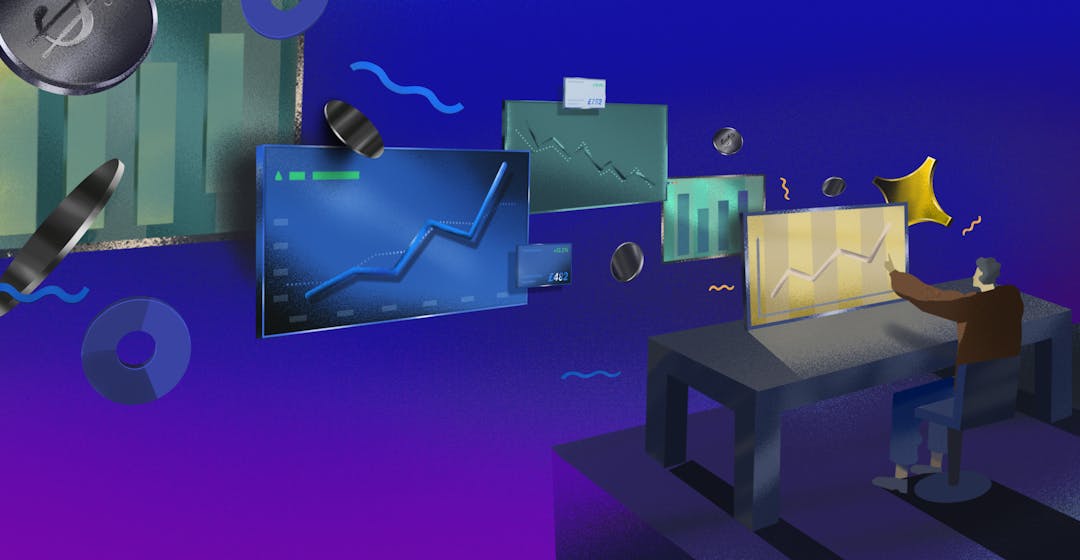When you get the opportunity to have a quick trip to a sunny place to speak to like-minded individuals and companies about one of your favorite topics, it’s an easy “yes”. Right?
Two of our very own Product Managers, Dominic Leverment and Tanya Agarwal were lucky enough to do just that. They each traveled to meet-ups hosted by Notion in Barcelona and Paris, aimed at companies that had a product-led growth focus.
The rise in product-led strategies within the SaaS industry has certainly not gone unnoticed (we talk about it a lot for a reason); but just like every company is different, so is their PLG strategy.
So, what insight into the growing world of product-led growth can Dom and Tanya give us? Here are their five key PLG learnings of the events:
1) Hybrid wins
The concept of a hybrid sales motion is one we’ve talked a lot about already, and for good reason too. The benefits in terms of revenue and business growth are unmatched because you are tapping into all key markets, offering ideal onboarding processes from small businesses to enterprise-level businesses.
Many companies start up with a product-led growth GTM strategy, but adding a sales-led motion will allow you to go one step further by 1) moving your business upmarket, and 2) further enabling your product-led growth strategy.
SLG is an enabler of PLG in a number of ways, including:
- Converting freemium or free trial users to paying customers
- Picking up on cross-sell and upsell opportunities
- Providing customer insight to help towards UX and product optimization
In fact, not using them together could actually be halting your business growth.
2) …but it comes with its challenges
We can’t say adding a sales-led motion to a product-led growth strategy is easy work. For example, PLG companies can struggle with the complexity of converting qualified leads and building out a sales strategy from the bottom-up, because it wasn’t a requirement before. A whole other skillset is needed within teams for this.
Companies that start out PLG can struggle with the complexity of converting qualified leads and building a sales strategy from the bottom-up, because it wasn’t a requirement before. A whole other skillset is required within teams for this.
Finding the right talent and hiring is just one of the challenges. Other examples include:
- Manual processes (including invoicing)
- A lot of extra admin
- More room for human error
- Global sales tax liability and other laws being on you to comply with
- Issues with reporting and split data
For more on the challenges of adding a sales-assisted motion to your GTM strategy, check out this post.
3) The art of self-serve
Self-serve first is an approach that many PLG companies adopt for a number of reasons, including:
- Meeting your customers’ expectations
- Limitless reach
- More cost-effective
- Potential for insights to improve product value
- Happy customers, employees, and management
To get it right, you need to listen to and understand your customers and how they value your product or service, then reflect that in your pricing and growth strategies. It’s more of an art than a science.
To get these customer insights, you need engagement. This is where the topic of gamification can step in.
Gamification is certainly one way to keep your users active, which has the longer term benefits of retention too. But the question was asked: when is best to introduce gamification into your self-serve onboarding? Whilst some said it was a consideration for further down the line, others thought it was a good way to boost your process from the start. We’d love to hear what you think.
4) Invest smartly in your team
Whether you’re opting for a purely PLG strategy or going for the hybrid approach, who you hire and how your team is balanced are two very important considerations.
Of course, it varies from business to business, but PLG is a cross-functional strategy. Let’s take a look at how product-led approach can fit into each team:
- Product and engineering: Your product needs to live up to customer expectations, and adapt to their ever-changing requirements.
- Risk and legal: As you scale, so does your risk factor, eg. global sales tax regulations and other laws to comply with.
- Marketing: You want your product to be heard and talked about - think about building a community as that’s an incredible multiplier for PLG.
- Success: Having support available to users will improve their experience (and therefore your retention rates).
- Sales: A sales team means a focus on upsell, cross-sell, and higher-value opportunities for more revenue.
5) Discover community-led growth in the industry
A new and much-talked-about trend stands under the umbrella of product-led growth: community-led growth (CLG).
CLG is all about your community driving your product - but to build that community, you need to have a great product that’s worth the hype. You want people to push and pass on their passion for what you do by sharing their experiences and their recommendations.
But word-of-mouth isn’t the only great benefit to this approach. CLG provides you with invaluable feedback from those who use your product, helping you towards the optimization of all aspects of your product: your value proposition, your pricing strategy, your upsell strategy, and so on.
If you’re taking a community-led growth approach, you will be interested in our recent webinar with CLG-enthusiastic, Adam Schoenfeld. Check it out.





